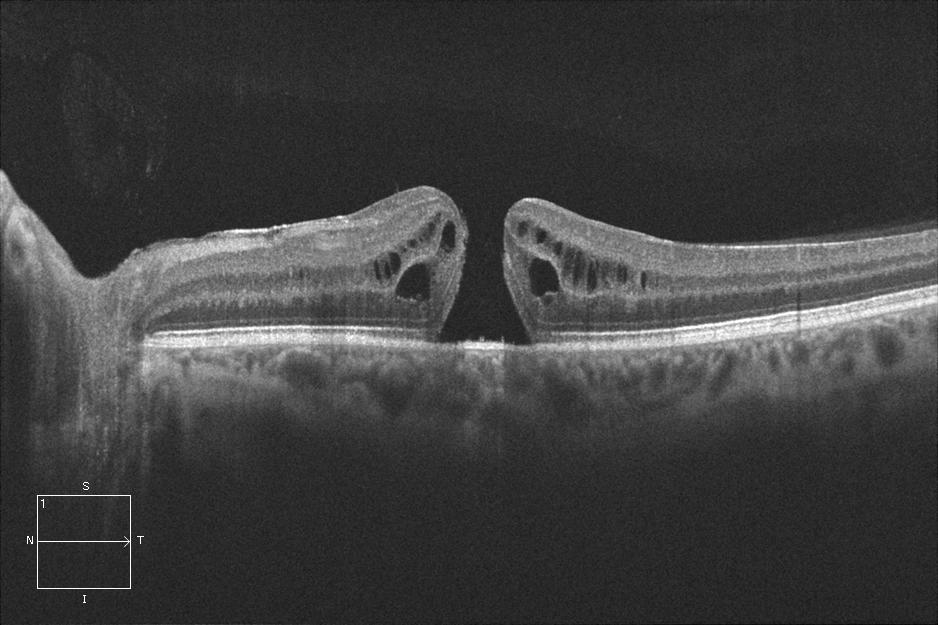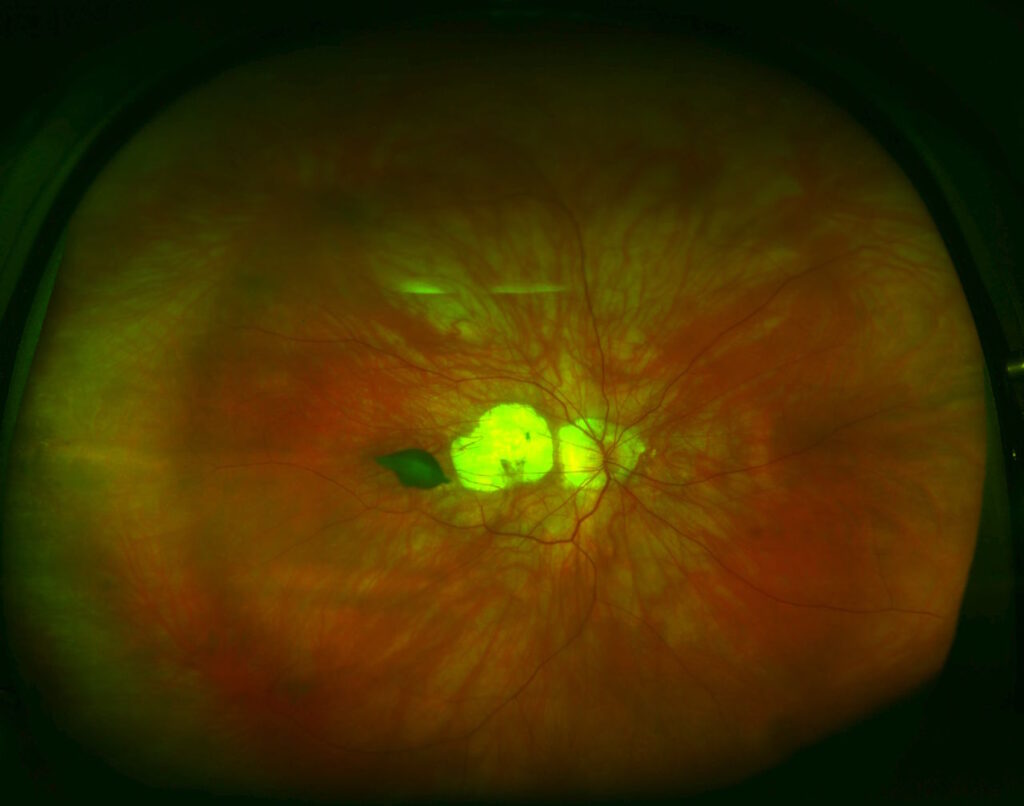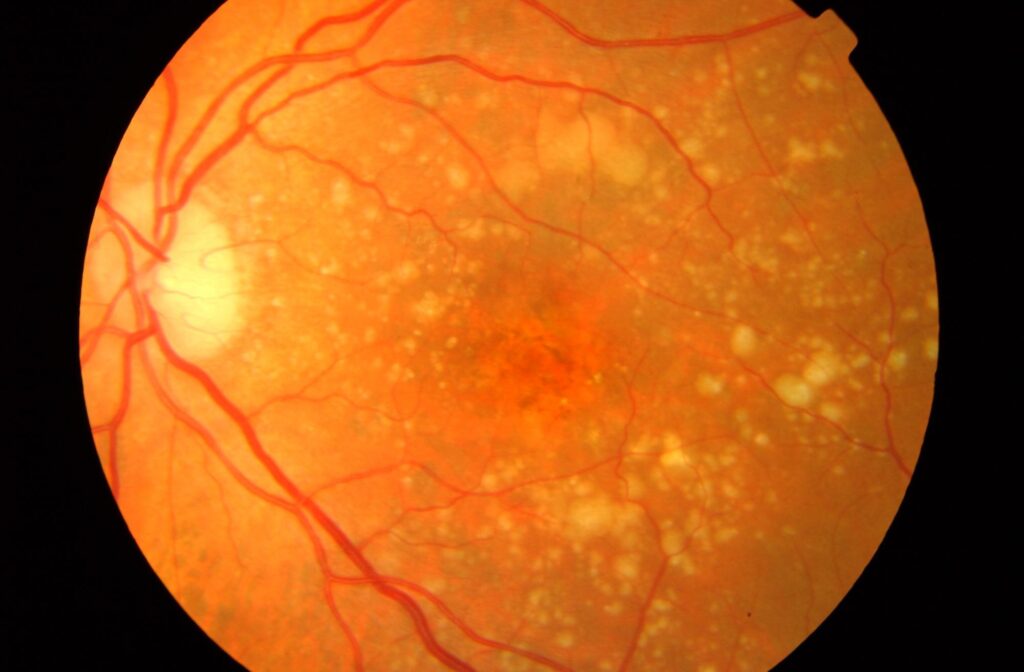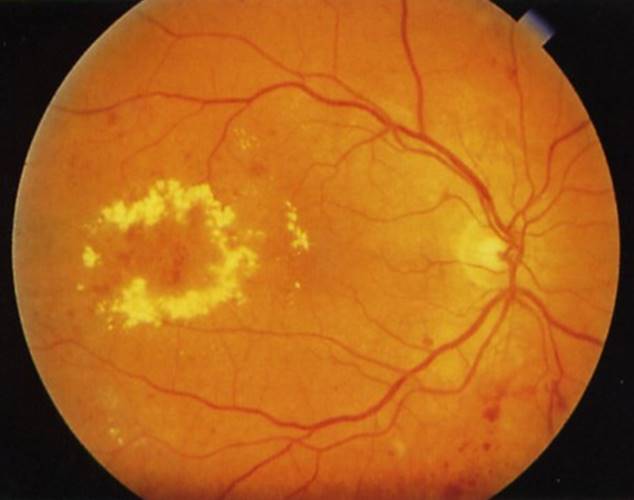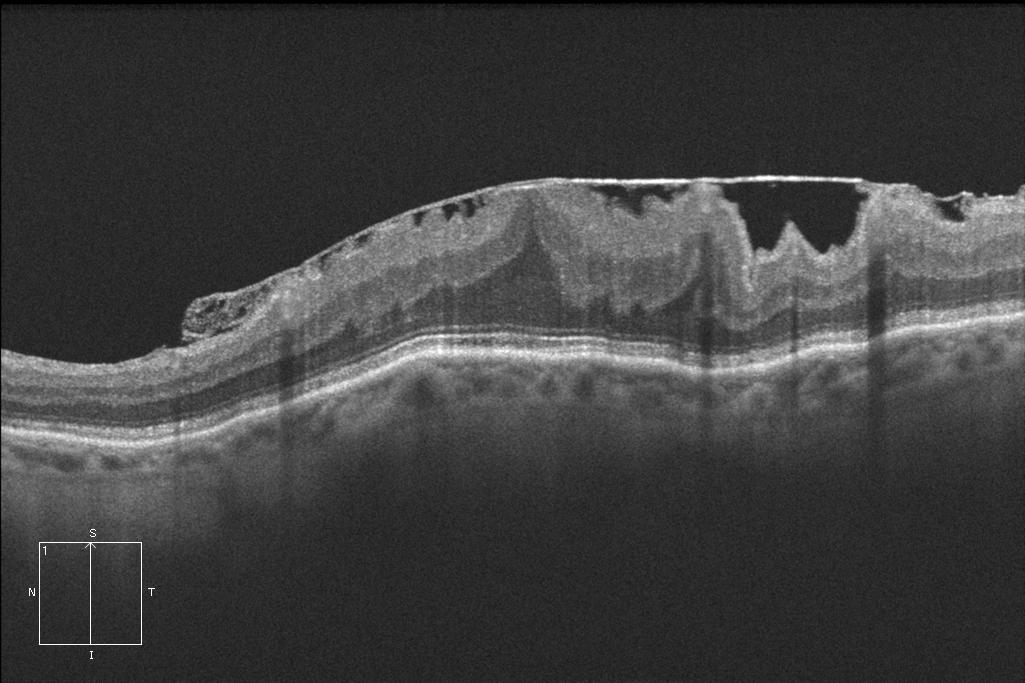Symptoms
Distorted vision


What is distorted vision?
Distorted vision or metamorphopsia is a visual problem that causes the images around you to look a different shape or size. This alteration basically consists of seeing lines that normally appear straight (door and window frames, floor tiles, zebra crossings, lines of text, etc.) twisted, curved or with “watermarks”. Patients with distorted vision might also notice that the faces of those around them are deformed.
The causes of distorted vision are related to diseases and injuries to the macula, an area located in the central part of the retina directly linked to visual acuity and central vision. Despite being small, the macula is essential for appreciating movement and precise details.
Associated pathologies
In general, any disease or incident affecting the central part of the retina might lead to distorted vision.
What effect does distorted vision have?
The basic problem of metamorphopsia is that it starts by affecting one eye and then the other. While the disorder is unilateral, it might go unnoticed because the brain integrates the information it receives from both eyes into a single image. This means that it might take a while for you to discover that your vision is distorted, which delays seeing an ophthalmologist.
Another important factor to consider is the speed of occurrence of metamorphopsia: when it happens suddenly or severely, it might be neovascular AMD that must be treated urgently. If, however, distortion appears slowly and progressively, its main cause is normally a macular epiretinal membrane, which is dealt with in scheduled surgery.
As the macula becomes more and more damaged, you will notice an increasing number of problems in carrying out different everyday activities that require clear and precise eyesight: sewing, reading, distinguishing faces, looking at a receipt, checking the time on your watch, etc.
What should you do if you have distorted vision?
Given that this problem might take a long time before it becomes evident, it is wise to regularly visit your ophthalmologist for a full eye check up to detect any abnormalities during their earlier stages. Further, one of the methods between check ups that can help check whether you have distorted vision or to monitor its progress is the Amsler grid, a simple test available in almost all ophthalmology clinics and that you can do at home.
The Amsler grid is a grid formed by a lot of small squares and a black dot right in the centre. Covering first one eye and then the other, you should stare at the black dot without losing sight of the squares around it and check that you see straight lines or whether the squares change size or shape. This information, along with that collected by the specialist during the examination, will help identify the specific cause of distorted vision so that the right treatment can be started.
The Miranza ophthalmologists would like to remind you that any behaviour that is harmful to vascular health in general (smoking, diabetes, obesity, high cholesterol, etc.) will also have negative repercussions on the condition of your retina and, more specifically, your macula. Avoiding these factors will therefore have a positive effect on your eyesight and will contribute towards your eye health.
